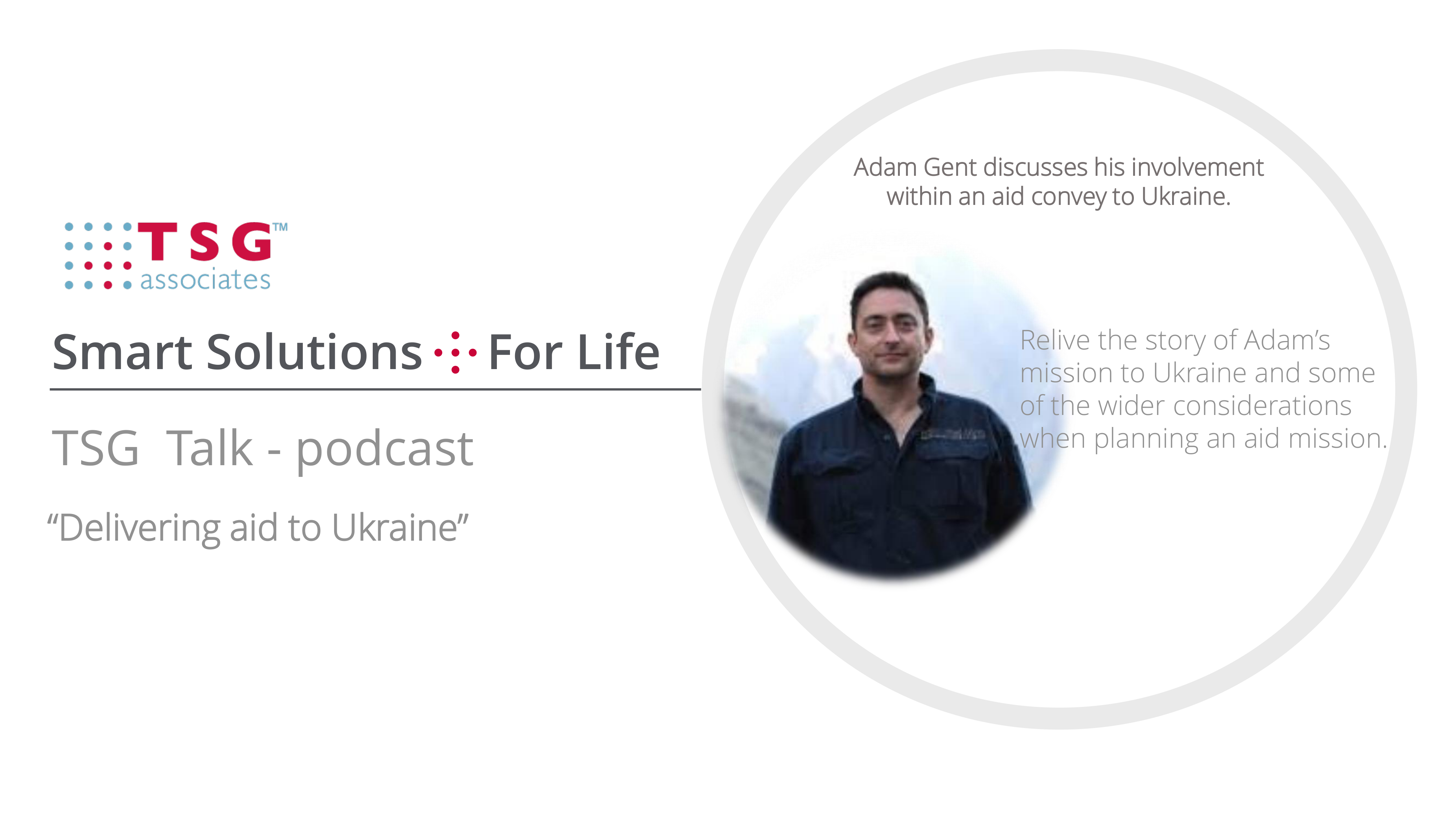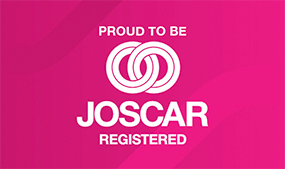
02/08/2022
TSG Talk - Delivering medical assistance to Ukraine
During a recent episode of TSG Talk, Colin Smart, Senior Partner at TSG Associates, discussed Adam Gent’s aid mission to provide assistance to the Ukrainian people during the ongoing war with Russia.
The aid mission
First, Adam introduced himself, described his role as head of Real First Aid, which offers training courses for high-risk areas, and shared his experience delivering aid to Ukraine as part of an aid mission.
“I run real first aid, a first aid training organisation which specialises in the design and delivery of training courses principally aimed at those who work or sometimes play in remote or high hazard environments. I started my career many, many years ago in the outdoor industry. I was working with young people in the outdoors and occasionally in trips abroad, and through this I realised the majority of first aid training just isn't appropriate once you're outside of an office or domestic setting. So that really piqued my interest in remote first aid in healthcare. And over the years, I've worked across the world, including Ukraine, a couple of times. Borneo, Tajikistan, Dubai, much of Europe, and I've been really lucky to work with some very interesting people.”
He then told us about his aid convoy which went to the border of Ukraine and Poland.
“I was part of a convoy which took 25 Vehicles, Land Rovers, fire tenders, and fire support appliances to the Poland Ukraine border. I was in the second deployment out of three. So in total, there were over 60 fire appliances which had been donated from fire services around the country.”
Space was scarce, so all the medical supplies were stored inside the vehicles.
“Where possible we stashed those vehicles with medkits… they were incredibly kindly donated by families and friends, by fundraisers, and also by some fairly large companies… their generosity was incredible… the vast majority of stuff we sent over there was in date, it was sealed, it wasn’t poor quality meds, all quality stuff.”
Adam makes it clear he was never in any danger, but he still saw the obvious need for help.
“In the offset, I need to make it clear I wasn’t in any hostile environment, we weren’t in a hot zone… we only made it as far as the border. But even there, you know, 1000 kilometres away from the front line. It was palpable, the whole need for help and assistance.”
In Ukraine, he divides the needs into two – trauma and humanitarian need, with the latter being more urgent.
“It's a huge spectrum of needs across the country, but you could quite easily put them into two sets of need. So when we think about conflict zones, we naturally think of the trauma, and certainly there have been many injured and killed. But the larger need is very much humanitarian.”
So many people have been displaced and killed in Ukraine, causing a huge humanitarian crisis as Adam explains:
“So the stats I've got in front of me are pretty current. Just over 4000 people have been killed in this conflict …nearly 300 children and over 5000 injured… over 400 of those injured have been children. So we're looking at close to 10,000 people who've been killed or injured as a direct conflict of war… More than 4.6 million people have fled Ukraine, and that makes it the fastest growing humanitarian crisis in modern times. 90% of these are women and children, so there are two very different needs. You got the needs within the hot zone if you like… and the needs of the displaced communities which are quite different.”
Five impacts of a blast injury and the impact on the humanitarian crisis
Adam then highlighted the five sequential impacts of a blast injury event, from blast wave effects to fragmentation and indirect impacts.
“In a single blast injury event, we often talk about the five sequential impacts that the casualty receives. So your primary injury is the blast wave, that fast moving wall of air. People exposed to that are probably going to die very quickly and they'll die of things like blast lung, abdominal haemorrhage and perforation, and a significant head injury, but interestingly not with necessarily very visual or graphic injuries on the outside. That will kill you pretty quickly.“
Adam continues going into detail about secondary impacts.
“And then you have your secondary injury and that's the fragmentation. So if the blast wave didn't cause you harm, what it's carrying, things like broken glass, debris, shrapnel; they now become projectiles, so some of the injury patterns become ballistic. So things like penetrating injuries and external bleeding.”
He then goes onto the tertiary impact of the blast wave.
“Now a tertiary injury, that's indirect impact. So the casualty has been thrown up against the wall or falling masonry, falling timbers. So as we get further away, the injuries become less direct and these sort of injuries, things like that, massive fracture, traumatic amputation, blunt force injuries, chest injuries. These are likely to kill you and will probably take you a slightly longer period of time.”
He explains about the quaternary injuries of blast impacts.
“And then we have the quaternary injuries. So these are like the byproducts that we're exposed to from the blast, heat, light, and toxins. So casualties will sustain things like burns, dust inhalation, smoke inhalations, toxic fumes, and so you've got these series of impacts that we talk about in terms of blast injury and those first four, they're the sort of things that people will be experiencing in the areas of active conflict. And that's where the trauma is.”
Lastly, he explains about the impact of the blast on infrastructure and how this is intensifying the humanitarian crisis in Ukraine.
“But we've also got this quintenary impact. That is a relatively new concept and this is looking much further down the timeline at those nearby who have survived the initial blast, and this is issues of primary healthcare, things like chronic pain, the need for regular medicine, malnutrition, dehydration, sanitation infection. As we see, it's not actually the blast that has caused the issues. Now what has happened is the breakdown of infrastructure and that's where the humanitarian need is. The simple stuff, you know, down to women's sanitary products and baby food. So they're really the two needs … A very acute need for trauma. And then you've got your primary healthcare need for a much wider population.”
What advice would you give our listeners?
Adam gave his advice on the importance of morale and safety.
“I would say the first point is remember that you are the most important person.
We drill this in when we're talking about scene safety when approaching an accident, and you are responding to that accident, drilling it in that you are the most important person; it's their emergency, don’t make it your emergency. Morale is fundamentally important. Everyone else’s and your own. You know we prepare for witnessing disturbing events and we pack our kit commensurably for that, but boredom can be utterly desperate, eating the same food that you don't particularly like every day for breakfast, lunch and dinner can be desperate, and so I would strongly recommend thinking about your creature comforts and that could be food. It could be a nice pair of socks or your own pillowcase. Music, stuff like that to make your life more bearable.”
He then gave his advice on adding value to their role in deployments.
“Think about how can you add value to the project? How do you make the seat you are occupying worth it? So every space on a project like this is taking a seat that could have been used by someone else. So each person who goes on this sort of deployment, they've got a cost attributed to them. So you know, whether you're self-funding or an organisation is sponsoring your place there is a cost that has been paid for, and people need to be fed and watered and moving people costs money. So I think about how you could count more. So you're not just a passenger. So, for example, our risk profile was very low, and there were large numbers involved, but the hazards, you know, were minor; one thing I did was a pre-departure health questionnaire. So this was an opportunity to identify everyone's medical history, their existing medical conditions and what medication they're on. It's much better to find out something before it happens than when it happens. If you've got a casualty, who's bleeding and it just won't stop, you'd much rather know that they're taking warfarin beforehand.”
What is your essential medical equipment?
Adam then explained his reasoning for choosing scissors as his equipment of choice.
“That, for me, would be a pair of cheap £2.50 EMS toughcut shears. I'll always take scissors and this is my rationale. So if we work our way through the accident procedure, you know, whether you can use doctor, ABC or March. In terms of managing the danger, I don't need any kit to manage danger. You just need eyes, ears and a safe pair of hands. But I may need to access the casualty. And that might mean cutting through webbing harnesses or seat belts. If they're trauma casually, I want to strip them down and I want to be able to cut through clothing.”
Find out more
Click here to listen to the full TSG Talk episode featuring Adam Gent to find out more about life-saving solutions, please call TSG Associates on 01422 557841 or email us at info@tsgassociates




%202.png)







